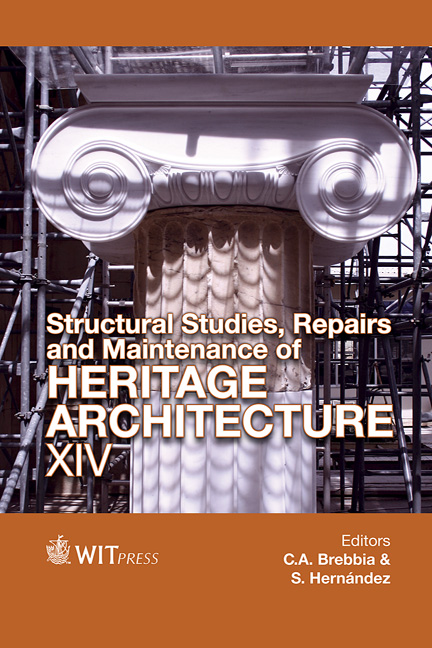Knowledge And Recovery Of Military Architecture: The urban Castle Of Pomarico (Italy)
Price
Free (open access)
Transaction
Volume
153
Pages
10
Page Range
545 - 554
Published
2015
Size
2,003 kb
Paper DOI
10.2495/STR150451
Copyright
WIT Press
Author(s)
A. Guida, A. Pagliuca, G. Damone
Abstract
To know is to document and, thus, to ensure the memory of man-made actions; it could become an important element for recovery and restoration interventions.
In fact, to analyze a monument from a historical, technological and material point of view means to understand the complex system of relationships among its parts, but also with the environment in which it is located. The above becomes extremely important in the case of urban castles, where the military architecture cannot be separated from the building fabric in which it is inserted. This architecture was built to defend the city and it has had different characteristics over the centuries. It is the generating element of new urban centers (or new military settlements within centers already structured) and become the symbol of the power of the King on the community as well as the last bastion to conquer the enemy, in the case of siege. The research focuses upon the castle of Pomarico (Basilicata, Italy). Through an analysis of technological and construction systems, the research aims to propose a methodology of study and analysis for this architectural evidence that has lost its primary function and is in a state of neglect and decay. The dialectic of conservation consists, therefore, in antinomy between the conservation of matter and conservation of the image. Between these extremes lies a third element constituted by value or by a system of values that the monument has. The most current guidelines of the method seen in the integrated conservation (understood as the result of the combined techniques of restoration and research the appropriate functions) the goal that it would like to pursue.
Keywords
military architecture, knowledge, recovery, integrated conservation




